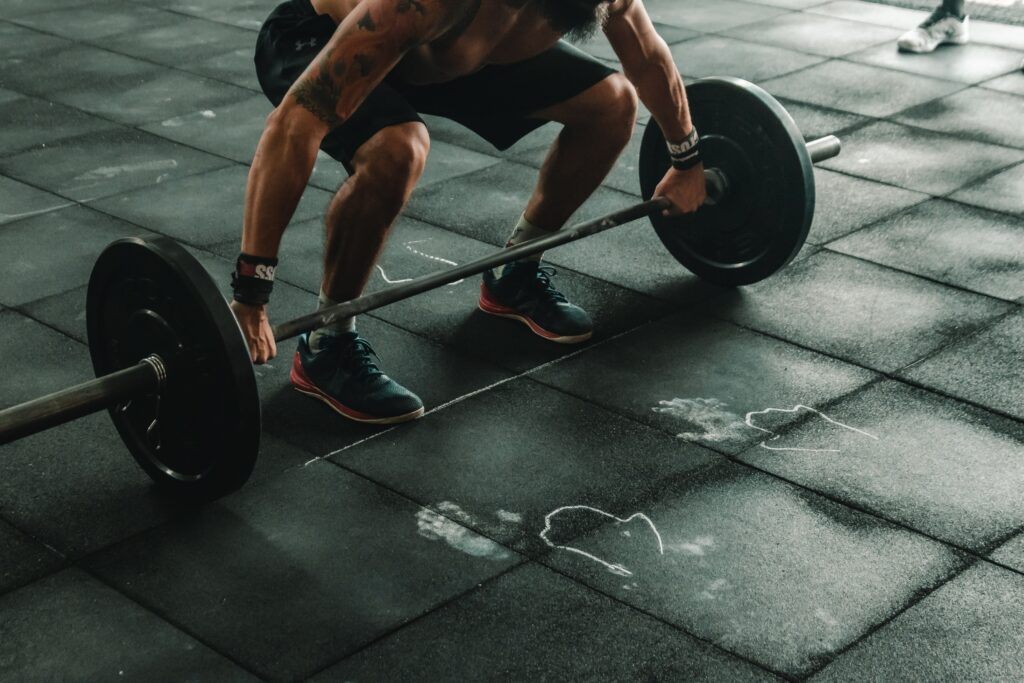Deadlifts and squats are two of the most popular compound exercises that are often included in strength training programs. While both exercises are incredibly effective for building strength and muscle mass, combining them can be very demanding for the central nervous system.
Deadlifts are considered to be one of the most challenging exercises as they involve lifting heavy weights from the ground, engaging a large number of muscle groups simultaneously. Deadlifts target the lower back, glutes, hamstrings, quads, and core, making them a highly effective exercise for building overall strength and power.
However, deadlifts are very demanding on the central nervous system, which controls the body’s ability to recruit muscle fibers and generate force. This means that performing heavy deadlifts can put a significant strain on the CNS, making it difficult to recover and perform other exercises that require CNS activation.
Squats are also a highly effective compound exercise that targets the lower body muscles, including the quads, hamstrings, and glutes. This exercise (similarly to the deadlift) is also highly demanding on the CNS, as it requires a significant amount of stability and strength to perform correctly.
When performed together, deadlifts and squats can be very stressful on the central nervous system. This can lead to fatigue, reduced performance, and an increased risk of injury. To avoid overloading the CNS, it’s essential to incorporate adequate rest and recovery periods between workouts, focus on proper form, and adjust the weight and volume of exercises based on individual fitness levels.
Read on to learn how to combine squats and deadlifts in your training regime effectively and get the most out of these two brilliant exercises!
How to squat more? How to deadlift more?
Athletes often ask me what to do when their lifts don’t go up despite paying more attention to them. Some increase volume, others increase frequency but for some reason, it just doesn’t seem to work. This is when people stall, get clueless and ask themselves “What am I doing wrong?”. The solution to this question is sometimes counterintuitive…
In strength and power sports, most top-tier athletes are usually fast-twitch dominant. Now this means that such athletes cope better with either heavier weights or more powerful movements executed in the lower rep ranges. It has certain pros and cons and that typically covers less endurance and longer recovery time with less volume being more effective for such an athlete rather than vice versa. In this article, I am going to cover a lower body training approach that I had learnt when I was being coached by Scot Mendelson.
The Idea
This style of training allows for better recovery by alternating heavy deadlift and heavy squat weeks. Actually, this type of approach is not uncommon among heavyweight top-tier lifters who simply lift big weights. The idea is to train the squat heavy for one week and then the deadlift heavy on the other. Athletes such as Eric Lilliebridge or Stan Efferding (who I personally consulted in the summer ’21, before I applied to Scot Mendelson for coaching) have also utilised this approach for peaking with great success. It is to be noted though, that due to the lower training frequency such style might not be as effective for hypertrophy therefore I’d strongly recommend that you incorporate some hypertrophy accessories into your workout so all the muscles get at least some stimulus to prevent muscular atrophy during longer peaking cycles.
Example Routine
The workout is divided into Week A and Week B. Personally, I like to throw in some hypertrophy accessories (as mentioned above) to hit the main working muscles responsible for doing the job in the other lift but there are also people (such as Eric Lilliebridge) that like to execute dynamic effort work for the other lift with much less weight on the bar. However, the way I program such routines by myself involves mostly the muscle-building repetition ranges.
Week A
- Squat (heavy)
- Squat variations and/or power work
- Lighter deadlift variations or accessories intended to grow spinal the posterior chain muscles
Week B
- Deadlift (heavy)
- Deadlift variations and/or power work
- Lighter squat variations or accessories intended to grow the leg muscles
When it comes to the practical appliance, here comes a sample routine that I like to use myself. Bear in mind, though, that you can play with as many variations as you like and the rep ranges along with the exercises chosen will vary depending on the goal (that is if you’re peaking or just building the foundations).
Week A
- Squat – 1/2/3 reps
- Speed Squats
- Squat Variation (Box Squat, Paused Squat, Anderson Squat etc.)
- AMRAP Squat x 6-10 reps
- Deadlift Accessories (Romanian Deadlifts, Back Extensions, Good Morning, Reverse Hyperextentions etc.)
- Optional: Leg Curls
Week B
- Deadlift – 1/2/3 reps
- Speed Deadlifts
- Deadlift Variations (Low Block Pull, SLDL, Deficit Deadlit etc.)
- Squat Accessories (Leg Press, Leg Extensions, Belt Squat, Hack Squats etc.)
When I follow workouts structured this way, I usually stick to the routine for a couple of weeks, never go all out on the deadlift, deload when I feel I need to (and that is dependent on the intensity) and then start a new cycle with some minor adjustments to the rep ranges and accessories of choice.
So if you feel that deadlifting and squatting heavy on the same week is too much for you, perhaps you should try this routine and see how it fits you.
P.S. Read these articles to find out what else coaches like Josh Bryant and Ryan Kennelly taught me about strength training.




